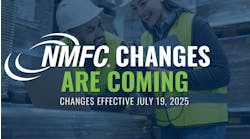Finding the right replacement part is imperative to a smooth and streamlined service event. After all, if the part isn’t right, it will cause repeat comebacks and added downtime.
Historically, a fleet has relied on the in-person relationship with its independent parts distributor’s sales account manager to help identify those used parts and assist with sharing insight on the appropriate replacement. The relationship is a benefit to the parts distributor because they have the opportunity to provide a solution to the fleet and foster a long-term, mutually beneficial working relationship.
“There's this growing separation between the buying habits of society in general and the way the heavy duty parts distribution channel works,” says Jamie Irvine.
Irvine started his career serving the heavy duty industry in 1998, including years working for a large U.S. parts distributor. Most recently, he hosts an industry podcast, The Heavy-Duty Parts Report, talking with manufacturers and suppliers in the heavy duty vehicle industry to share insights with fleets on how to lower total operational costs.
Today, 49 percent of parts are purchased over the phone, Irvine notes. That will inevitably continue on a downward trend as buying habits continue to shift to more online purchasing through ecommerce – only expedited further in the wake of the COVID-19 pandemic. While the heavy duty parts industry isn’t there yet, Irvine believes a monumental shift will occur over the next decade.
Demographics and technology
What happens when those industry experts behind the parts counter (or on the phone) with decades of experience begin to retire in droves? Well, that shift has already begun, and there is a lack of incoming new recruits to take over those jobs.
“We haven't been hiring enough people to replace the ones that are leaving, and we haven't for the last 25 years; we just have a demographic issue that cannot be overcome,” Irvine emphasizes. “No amount of training, no amount of rapid hiring, no amount of recruitment out of college is going to solve this problem fast enough. It is a people problem, and the only solution is not with more people, but with data.”
This demographic shift is driven by the retirement of baby boomers who hold vast amounts of institutional knowledge about the industry and parts identification, and the influx of a younger generation who grew up with technology taking on leadership roles in the fleet industry. These leaders want to utilize technology in their own shops to streamline processes, which will also address the shortage of potential employees entering the shop.
The value proposition an independent parts distributor offers is two-fold: they can help the fleet identify the part, and they can get it to the fleet in a timely manner. But what if technology could go far enough to help meet both needs, without having a physical retail location?
“The goal of everybody on the technology side is ‘let's take away the power from the parts guy and give it to the end user,’” Irvine says. “Not because we want to take it from them, but because they're all leaving and there are so few good parts people, knowledgeable parts people.”
A step into the future
“People need to be able to look up their own parts,” said Tyler Robertson, founder and president of Diesel Laptops, during a Heavy Duty Aftermarket Dialogue panel discussion. “We're investing heavily in that area to try to facilitate that.”
In October 2020, Diesel Laptops launched Diesel Parts, which combined the functionality of its then-separate truck parts lookup tool and parts cross reference tool, along with other various features. Most notably, if a fleet doesn’t know the part and needs to find more information, the platform can assist with IDing the part through four key features:
- Exploded views – This tool provides the user a visual of the full vehicle with the ability to zoom in on different areas in order to identify the location of the part.
- Year/make/model search - No VIN required. The user selects the manufacturer, model type, and year range. From there, he or she has access to all parts categories on that vehicle.
- Component search – This functionality works backward from the year/make/model search by starting at the part category. For instance, selecting aftertreatment, then DPF filters, then identifying the engine make and model, and so on.
- By measurement – Without having any idea about what the part is, including part number or application data, a user can navigate through step-by-step prompts that provide guidance on what areas of the part to measure in order to identify the part.
“Clients can easily follow the image and directions to find the exact part number they need, and then instantly cross it to other brands,” advised Robertson of the “by measurement” feature, launched in mid-January. “We've done this for over 13 types of parts, from starters and alternators to brake shoes and drums to U-joints. We plan to release at least 20 additional modules this year.”
Parts fulfillment
Even after identifying the right part – whether that’s through a parts account manager or an online portal - it is critical that the necessary part arrives at the shop in a timely manner.
“If you can solve figuring out how to help them identify the part themselves, you've only solved half the problem,” Irvine says. “That truck needs to go back into service as soon as possible and parts need to be roughly about two hours away in an urban center and next day in rural centers.”
The regular replenishment of standard parts and products can more readily be ordered online, and that adoption looks to be continued. But presently, independent parts suppliers are still critical to ensure quick delivery of unexpectedly needed parts.
The catalyst may well be when more of the industry realizes downsizing, rather than the continued expansion of brick and mortar retail locations, is the solution. Or, as Irvine suggests, converting those retail sites into distribution centers with a network of delivery vehicles that can easily pick up and distribute parts.
True disruption of ecommerce in the heavy duty parts industry has yet to occur. But, once it does, it could mean the eventual demise of independent parts distributors as we know them.
Other challenges
While various challenges are inevitable, two critical areas will have an impact on the future of the independent parts distribution: Vertical integration by truck manufacturers, and the industry-wide standardization for parts identification.
Vertical integration will drive parts development and distribution. The parts supplier we know today will either become very niche or work to be irreplaceable as a partner with an OE.
The independent light duty aftermarket has more readily adopted standardization practices through the Auto Care Association’s aftermarket catalog exchange standards (ACES) and product information exchange standards (PIES). The heavy duty aftermarket is still working to set these standards, let alone widely implement them.
“COVID has rapidly accelerated the adoption of digital technology,” Irvine says. ”But it's a bit of a wild west right now, because our industry still is lacking in the standards.”
There will certainly be change to the industry; it’s just a matter of finding the catalyst to establish the new way of doing things. Irvine says to expect things to be drastically different in the next 10 years.
“The traditional distribution channels need to adapt, and quickly, because their value proposition to the marketplace is diminishing every day as these technologies rapidly improve,” Irvine says. “Between parts identification technology, ACES and PIES data standardization, and OE truck manufacturers vertically integrating, aftermarket parts distributors with their brick and mortar retail stores and aging parts technicians are in a fight for their very survival.”
“There's a big problem there that I think technology can solve,” Robertson added. “That's putting parts, repair information, diagnostic tools all together into one seamless system. ”Allowing people to click buttons and having parts show up at their doorsteps is a huge benefit to our entire industry.”




